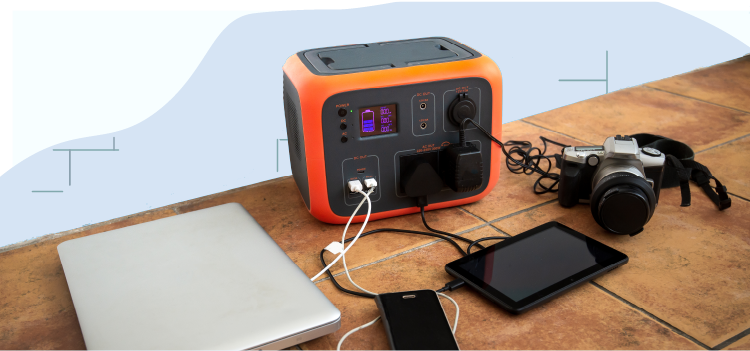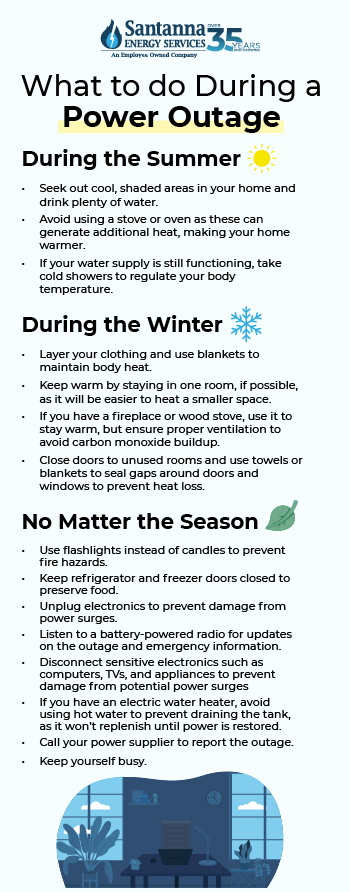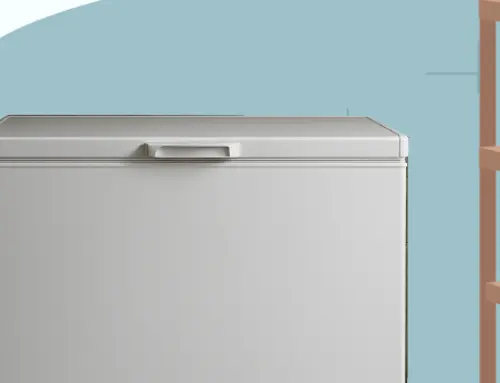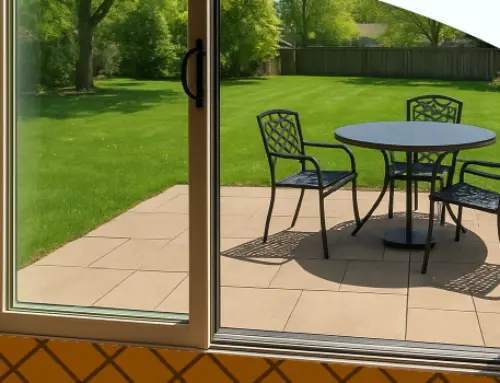How to Prepare for a Long-Term Power Outage
by Tyler Castle
10.6 min read

Experiencing a prolonged power outage can be both inconvenient and unsettling, especially when it disrupts your daily routine. No matter how you experience a prolonged power outage, knowing how to navigate these situations is crucial for your safety and comfort.
We’ll explore practical steps to take during an extended power outage. From keeping yourself comfortable, to staying connected with essential services, we’ve got you for whatever you endure. Being prepared not only helps you maintain peace of mind but also ensures that you can weather the storm—literally and figuratively—with resilience.
What Causes Power Outages?
In contrast to rolling blackouts, which are typically planned by grid managers, power outages occur without warning. Power outages happen more often than you think. As of April 2025, more than 400,000 customers in Pennsylvania experienced a power outage so far this year. These accidents can happen for numerous reasons, but here are some of the most common:
Weather-related outages related to natural disasters like snowstorms, rain, and hurricanes are the most common. With climate change contributing to more frequent and intense weather events, the likelihood of power outages is set to increase. Not surprisingly, 80% of power outages that occurred from 2000 to 2023 were caused by weather. Usually, when bad weather occurs, mechanical failures and vehicular accidents lead to power outages.
Number of Weather-Related Power Outages from 2000 – 2023
| State | Number of Outages |
|---|---|
| Michigan | 157 |
| Ohio | 87 |
| Pennsylvania | 82 |
| Illinois | 70 |
Even on days when bad weather isn’t on the radar, prolonged power outages can occur because of human error. Accidental damage from construction activities or vehicular accidents can disrupt power lines.
In the same way, animals aren’t excluded from being the cause of power outages either. Wildlife, such as squirrels or birds, can interfere with electrical equipment, causing outages. For instance, squirrels chewing on power lines or birds nesting on electrical transformers can lead to disruptions in the power supply.
In city areas where electricity is widely used, power outages can occur. During hours of high electrical demand, peak usage times can overload the system, leading to blackouts and prolonged power outages.
Lastly, freak accidents like vehicle accidents that take down powerlines can even cause long-term power outages. That’s why it’s SO important to be prepared. Disaster can strike at any moment.
How To Prepare for a Long-term Power Outage
Preparing for a power outage requires some planning. But once you have, you’ll thank yourself later if an outage occurs. Here’s how you can effectively prepare yourself for a long-term power outage:
Create a Family Emergency Plan
The first thing you’ll want to do to prepare yourself is to create a family emergency plan. You’ll first want to establish a spot to meet in case you or your family members are separated. If a power outage occurs while your family is out and about, consider designating a meeting place in case cell phones don’t work or Wi-Fi towers are down.
Next, ensure everyone knows emergency contact numbers. This is an important step in case anyone gets hurt when an outage occurs (a dark house can be a tripping hazard!)
Lastly, keep a printed copy of the plan in case your phone dies. This can serve as your blueprint for when disaster strikes.
Protect Your Electronics & Appliances
During a power outage, your devices and electronics are the most vulnerable to surges, fires, and malfunctions. If you know a power outage is imminent due to something like bad weather, proactively unplug sensitive electronics to prevent power surge damage.
If you live in an area prone to frequent outages, consider stocking your home with surge protectors for essential devices. This ensures power surges don’t zap important devices like computers or cell phones that store important data.
Be sure to charge or have a backup battery for critical devices like phones or medical equipment to ensure they don’t run out of energy when you need them most.
Practice Water Safety & Conservation
Fill your bathtubs and containers with water for cleaning and flushing toilets. It’s also a good idea to store bottled water for drinking; one gallon per person per day for at least three days.
Lastly, avoid using unsafe water sources that haven’t been boiled or purified, and turn off your main water supply if freezing or damage is possible.
Know Generator Safety & Setup
If you own a generator, it’s important to note that you should only operate it outdoors, away from windows and doors. Equally as important, keep fuel stored safely in approved containers and never plug a generator directly into home outlets without a transfer switch. Lastly, test your generator beforehand to ensure it works properly.
Have Your Vehicle Ready
During a long-term power outage, anything can happen. As a rule of thumb, it’s always a good idea to have your motor vehicle ready to go in case of disaster. Be sure to fill up your gas tank in advance and keep a vehicle emergency kit with blankets, a flashlight, and food in your car in case you’re on the move.
Think About an Alternative Way to Store Your Medications
The last thing you want to do during a power outage is to be without your essential medical care. As a safety, keep a supply of medications in a cool, dry place that doesn’t rely on electricity.
Use insulated or thermal bags for medications that require refrigeration during an outage and ask your pharmacist about alternatives or backup options for critical medications. Consider stocking up on portable coolers with ice packs for short-term storage in case the power goes out.
Compile an Emergency Kit
Be sure to pack an emergency kit that includes essentials like flashlights, extra batteries, first aid supplies, and a radio to stay informed about what’s happening.
Pack personal hygiene items and necessary medications and include cash in small bills in case ATMs are down.
Stock Up on at Least a Month’s Worth of Food and Water
When it comes to food during a power outage, focus on non-perishable, easy-to-prepare foods that don’t require electricity. It’s a good idea to store at least one gallon of water per person per day and rotate your stock of supplies periodically to keep them fresh.
Take Steps To Winterize Your Home To Prevent Heat Loss
In the Midwest, power outages commonly occur due to weather, and this applies to winter weather as well. Don’t leave yourself in the cold! Prepare for a long-term power outage in the winter by sealing windows and doors with weatherstripping or caulk and insulating your pipes to prevent freezing.
Always keep blankets and warm clothing accessible if temperatures continue to drop.
Keep Yourself Engaged with Loved Ones
Other homes and families might not be as prepared as you. Be sure to check in regularly with family and neighbors. To keep little ones entertained, create a list of indoor activities to stay occupied during outages and maintain a sense of community and support, especially for those who are vulnerable.
How Long Does a Power Outage Last?
Typically, power outages are categorized into two types:
Short-term outages: Typically lasting a few minutes to several hours. These are often caused by temporary disruptions like minor equipment failures or small-scale weather events.
Prolonged outages: Can last several days to weeks, usually resulting from major natural disasters or significant damage to the power grid infrastructure.
According to the E.I.A, in 2022, the average U.S. electricity customers averaged five and one-half hours of power interruptions. How long power outages last in your area will vary depending on your location, the size of your power grid, and the severity of the issue causing the outage.
Are Partial Power Outages Dangerous?
Partial power outages can be considered dangerous depending on the severity. In some cases, only certain circuits or appliances may lose power. This can create hazards such as inconsistent lighting, compromised security systems, or malfunctioning heating and cooling systems.
Partial power outages can cause appliances to malfunction, leading to electrical fires or damage to the devices. They can also create unsafe conditions if essential systems like heating or medical equipment fail. Crucial appliances like smoke alarms and carbon monoxide detectors could lose power and lead to danger.
While we can’t predict when outages occur, during bad weather, unplug appliances like coffee makers, air fryers, and single-use items to prevent them from blowing out. Be sure to disconnect affected appliances and use alternative power sources or backup generators if necessary.
It’s important to keep in mind that a partial outage affects only certain areas of your home, like specific rooms or circuits, and may indicate a localized electrical issue. A full outage occurs when your entire home loses power, typically due to a wider grid problem.
Identifying the type of outage quickly can help you decide whether to troubleshoot at home, call an electrician, or contact your utility provider.
What To Do During a Power Outage

Even if you live in an area where outages aren’t common, it’s a good idea to know what to do when a power outage occurs. Here are some tips on what to do during this situation:
During the summer
- Seek out cool, shaded areas in your home and drink plenty of water to stay hydrated.
- Avoid using a stove or oven as these can generate additional heat, making your home warmer. Opt for cold meals or preprepared snacks instead.
- Power outages can affect water supplies. If your water supply is still functioning, take cold showers to regulate your body temperature.
During the winter
- Layer your clothing and use blankets to maintain body heat.
- Keep warm by staying in one room, if possible, as it will be easier to heat a smaller space.
- If you have a fireplace or wood stove, use it to stay warm, but ensure proper ventilation to avoid carbon monoxide buildup.
- Close doors to unused rooms and use towels or blankets to seal gaps around doors and windows to prevent heat loss.
No matter the season
- Use flashlights instead of candles to prevent fire hazards.
- Keep refrigerator and freezer doors closed to preserve food.
- Unplug electronics to prevent damage from power surges.
- Listen to a battery-powered radio for updates on the outage and emergency information.
- Disconnect sensitive electronics such as computers, TVs, and appliances to prevent damage from potential power surges
- If you have an electric water heater, avoid using hot water to prevent draining the tank, as it won’t replenish until power is restored.
- Call your power supplier to report the outage.
What To Do During a Power Outage at Night
Power outages can happen at night when you don’t expect it. Usually, power outages are indicated by beeps and noise. If you wake up and suspect there’s an outage in your home, do the following:
- Use battery-powered lanterns, flashlights, or headlamps. Avoid candles due to fire risk.
- Ensure all family members, including pets, are safe and accounted for.
- Secure your home by locking doors and windows. Consider using battery-powered security lights or alarms.
- Keep refrigerator and freezer doors closed to preserve food.
- Unplug electronics to prevent damage from power surges.
- Call your power supplier to report the power outage.
FAQs
What should I throw out of the freezer after a power outage?
After 4 hours of being in the fridge without any power, we recommend throwing away the following:
- Meat
- Poultry
- Fish
- Eggs
- Milk
- Leftovers
To learn more, visit our blog for the full scoop!
How long does food last in a power outage?
According to FoodSafety.gov, your fridge will keep your food safe for up to 4 hours. Keep your door closed as much as possible. If you have doubts about anything you’re about to eat, throw it out; it’s better to be safe than sorry.
Are rolling blackouts and power outages the same?
Rolling blackouts and power outages both involve a shut-off of electricity but are not the same. Rolling blackouts are often scheduled by cities in advance while power outages are without notice.
How long does a power outage take to fix?
While some power outages take a few minutes, some can take longer depending on damage. On average, power outages take 2-3 hours to fix. The of course, depends on your utility provider, location, and severity of damage.
At Santanna Energy Services, we know that power outages can be stressful and disruptive for families. While you can’t always predict when the lights will go out, you can count on us to supply reliable energy that give you peace of mind year-round.
We’re here to help you stay prepared, comfortable, and confident—no matter what comes your way.
Tyler is an experienced energy professional, having worked for Santanna Energy Services, for the past four years. He is passionate about renewable energy and believes that diversifying the energy grid is the key to a sustainable future. Tyler is dedicated to supplying consumers with the best possible energy solutions and works diligently to make sure that Santanna can deliver the highest quality service.







